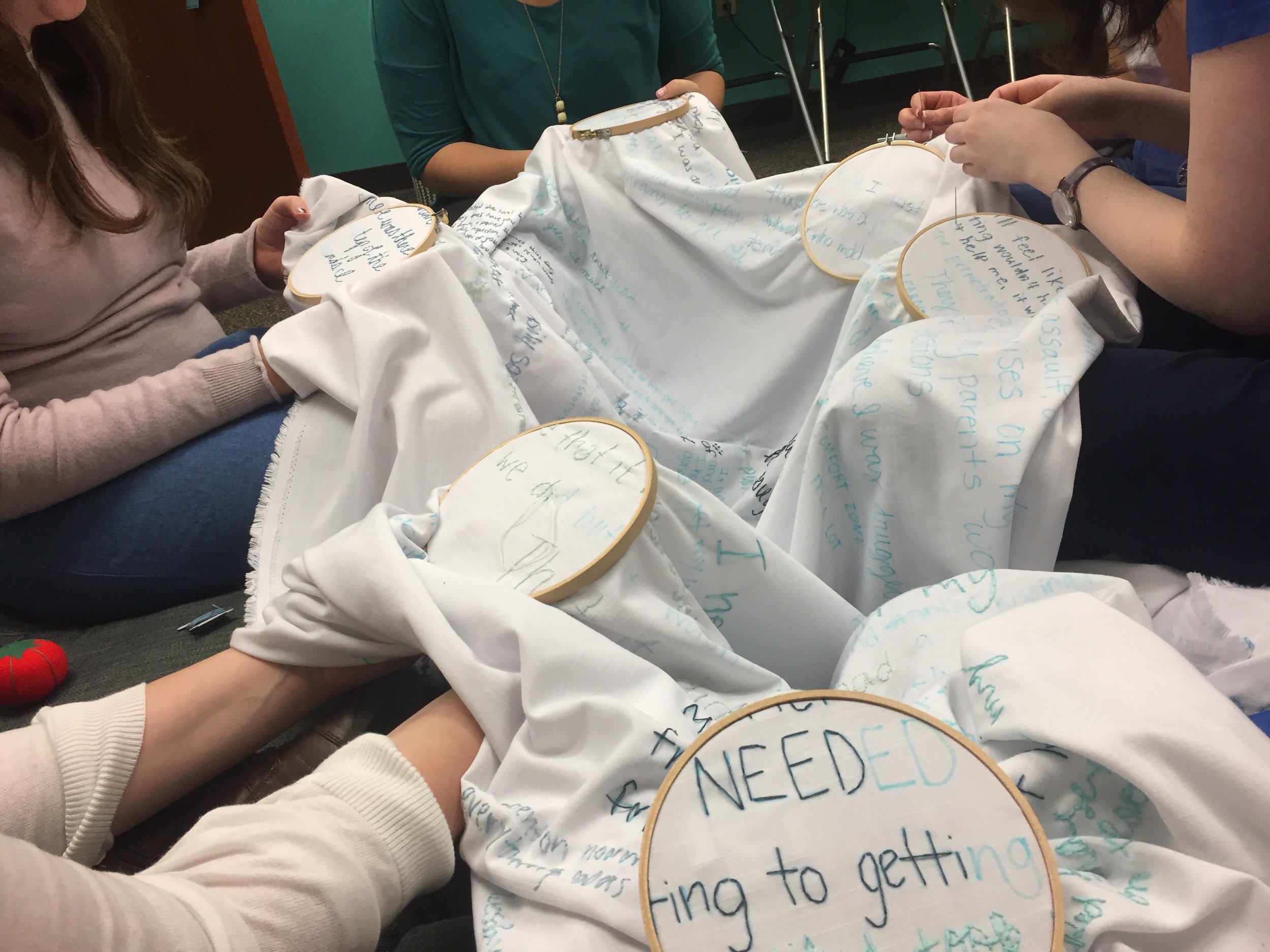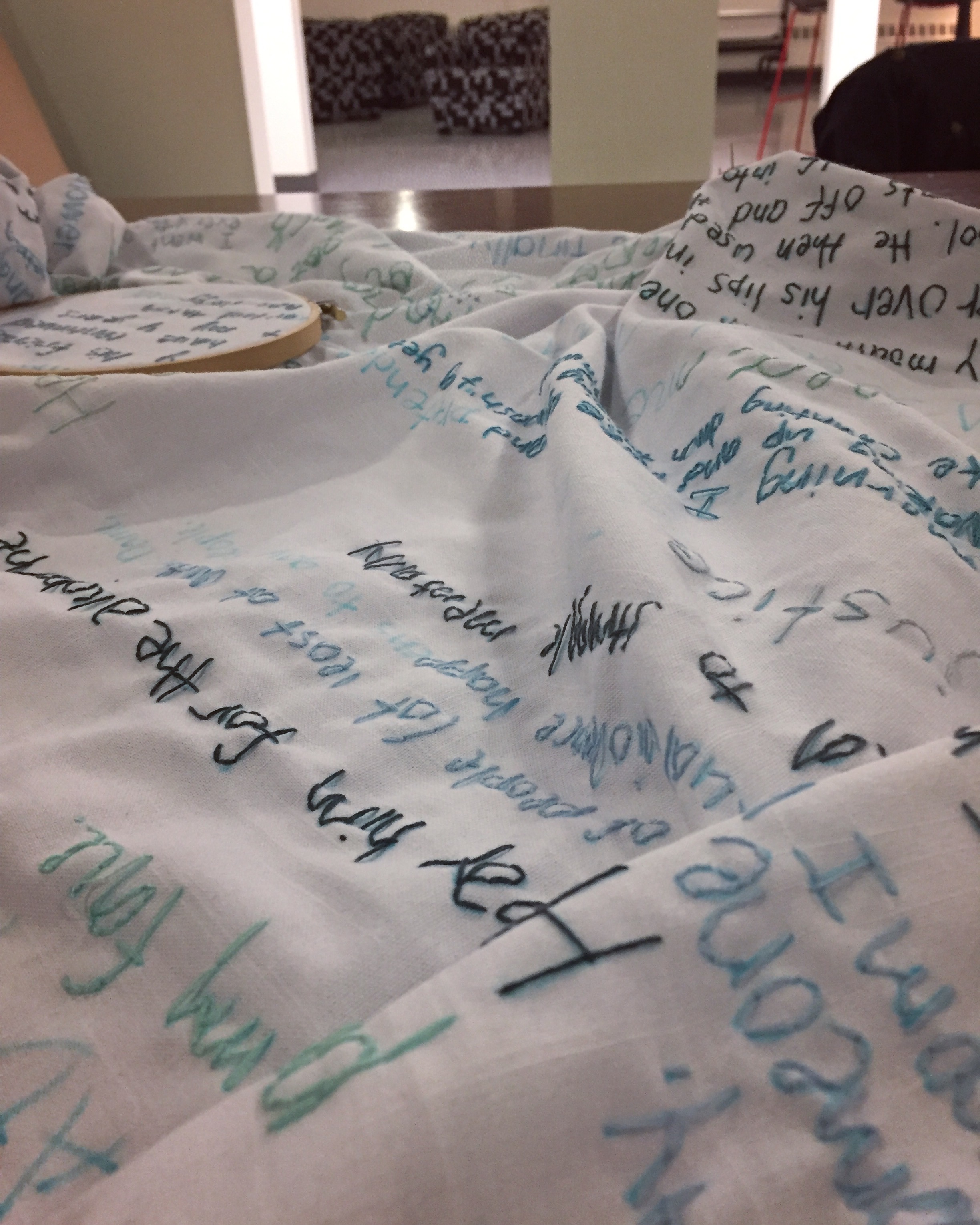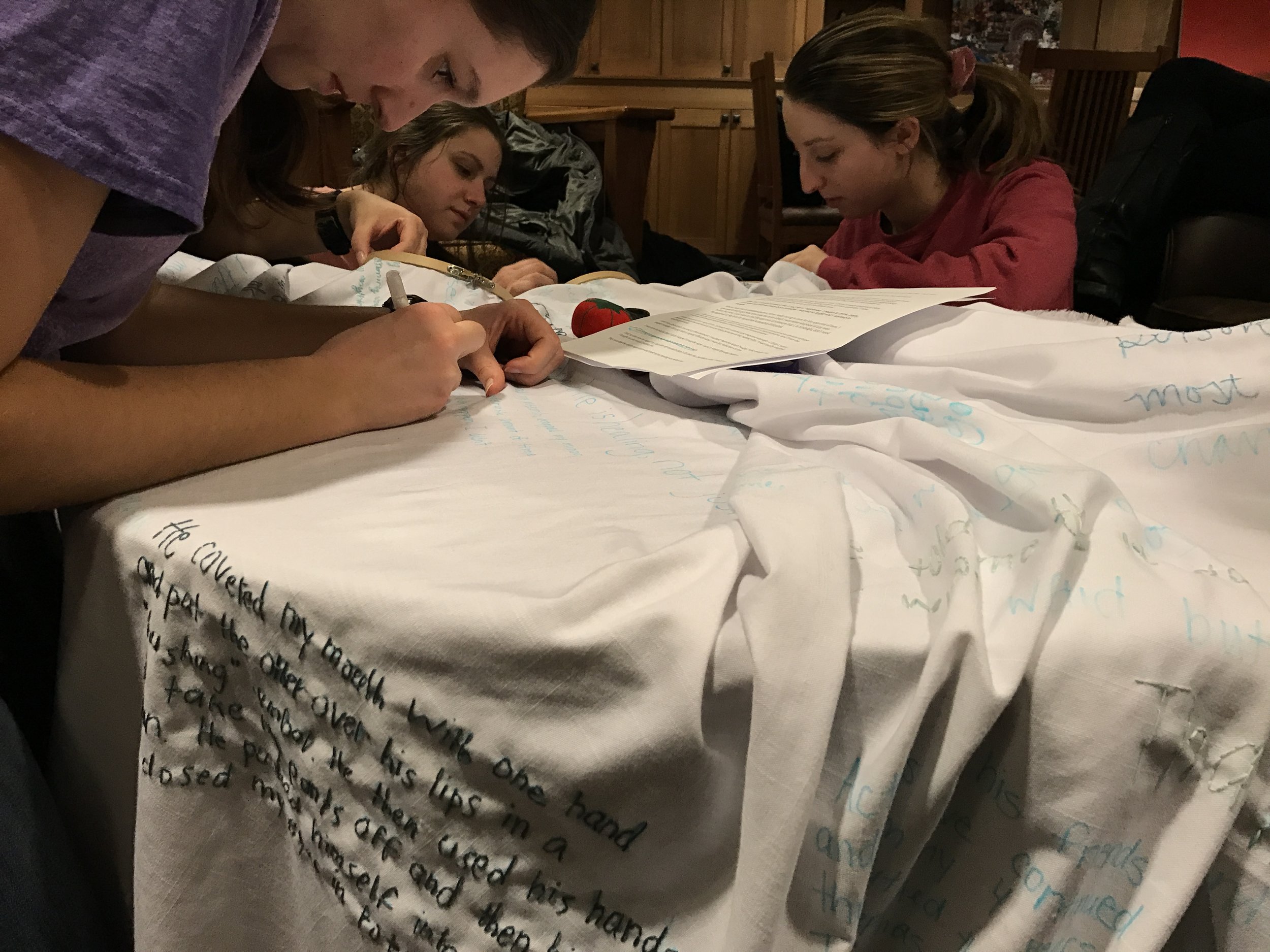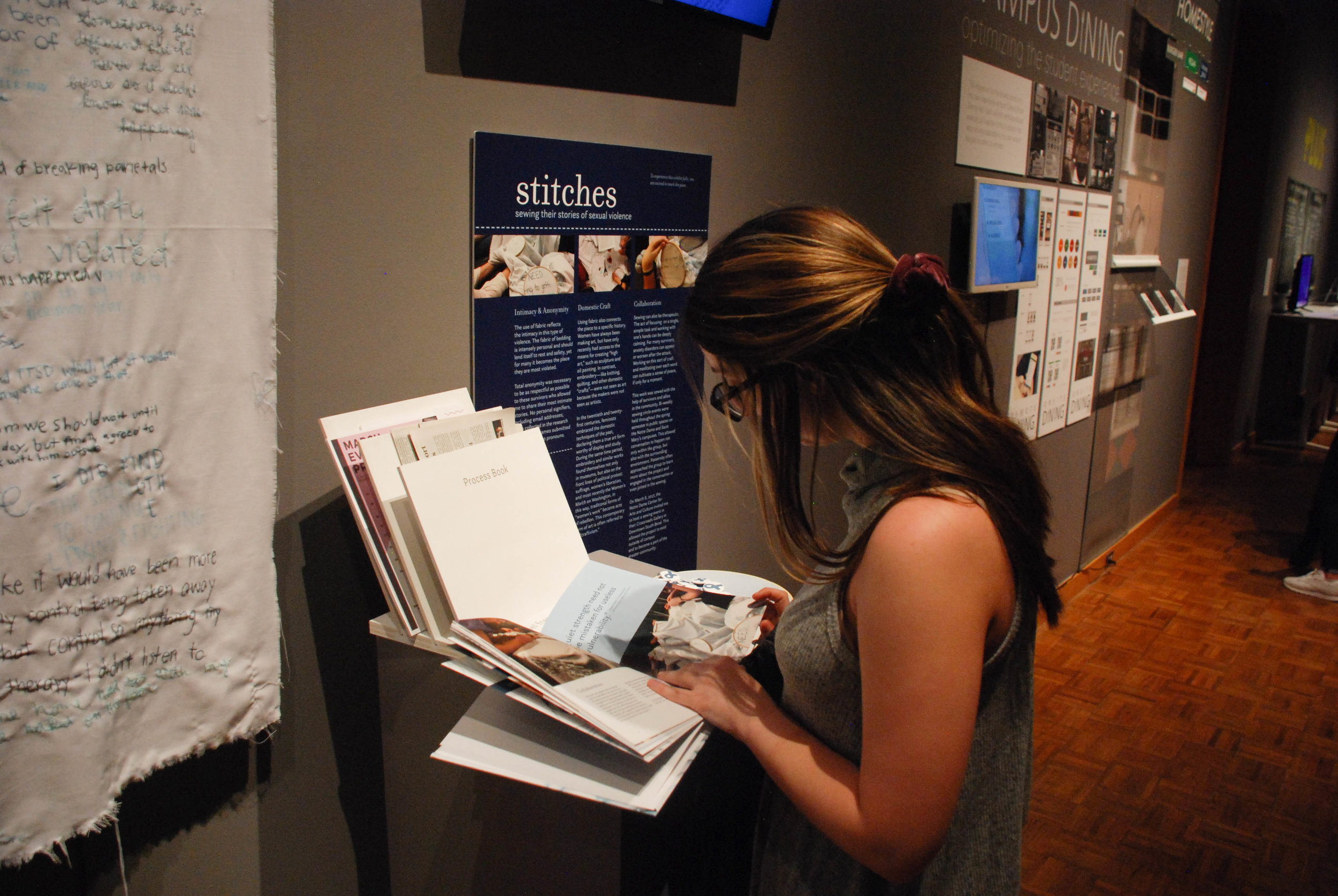Sexual violence is incredibly common on college campuses, affecting more than one in ten college students. Although the numbers matter, these people are not statistics. Their stories are deeply personal, and the anonymous nature of their presentation allows the viewer to deeply empathize with their words. Sixty-four stories were collected through an online survey, approved by the Institutional Review Board, and although the process was anonymous, some survivors chose to participate in the sewing and writing process on their own stories.
The use of fabric reflects the intimacy in this type of violence. The fabric of bedding is intensely personal and should lend itself to rest and safety, yet for many it becomes the place they are most violated. Using fabric also connects the piece to a specific history. Women have always been making art, but have only recently had access to the means for creating “high art,” such as sculpture and oil painting. In contrast, embroidery—like knitting, quilting, and other domestic “crafts”—were not seen as art because the makers were not seen as artists. In the twentieth and twenty-first centuries, feminists embraced the domestic techniques of the past, declaring them a true art form worthy of display and study. During the same time period, embroidery and similar works found themselves not only in museums, but also on the front lines of political protest: suffrage, women’s liberation, and most recently the Women’s March on Washington. In this way, traditional forms of “women’s work” became acts of rebellion. This contemporary form of art is often referred to as “craftivism.”
This piece was awarded the The Emil Jacques Gold Medal of Fine Arts, the oldest and most prestigious of departmental distinctions.
Research


The main goal of initial research was to fully understand the issue. This included psychological studies, specifically of the Illinois Rape Myth Acceptance Scale, the Campus Climate Survey results, legislation, and articles from Notre Dame publications, such as The Observer and Scholastic. The results were unsurprising: assault is frequent, it is performed by a small group of perpetrators that attack multiple victims, survivors usually know their attackers, and survivors are at an increased risk of becoming depressed, anxious, and even suicidal.
Getting personal stories qualified as human research, which required approval from the Institutional Review Board (IRB) at Notre Dame. This ensured that the research would be carried out with the highest ethical standards in mind, which was extremely important to me because of the sensitive material. I created a short and anonymous Google Survey with an open-ended prompt, allowing the survivors to tell as much or as little of the story however they were comfortable. To find participants, I engaged current students and recent graduates. I posted my survey in Notre Dame and St. Mary’s Facebook groups, starting with the Class of 2014 and ending with 2020, the current freshman. I recieved 64 responses from current students and alumni.
In addition to researching around the issue, I also wanted to learn more about textile arts and their relationship with feminism. I especially enjoyed reading The Subversive Stitch: Embroidery and the Making of the Feminine by Rozsika Parker.
Creation
Sewing can also be therapeutic. The act of focusing on a single, simple task and working with one’s hands can be deeply calming. For many survivors, anxiety disorders can appear or worsen after the attack. Working on this sort of craft and meditating over each word can cultivate a sense of peace, if only for a moment.
This work was sewed with the help of survivors and allies in the community. Bi-weekly sewing circle events were held throughout the spring semester in public spaces on the Notre Dame and Saint Mary’s campuses. This allowed conversation to happen not only within the group, but also with the surrounding environment. Passersby often approached the group to learn more about the project and engaged in the conversation or even joined in the sewing.
On March 8, 2017, the Notre Dame Center for Arts and Culture invited me to host a sewing event in their Crossroads Gallery in Downtown South Bend. This allowed the project to exist outside of campus
and to become a part of the greater community.
Exhibit
This piece was on display at the Snite Museum of Art from April 7 through May 21, 2017 as a part of the BFA/MFA thesis show. Museum photographs taken by Hugo Muñoz Ríos.







